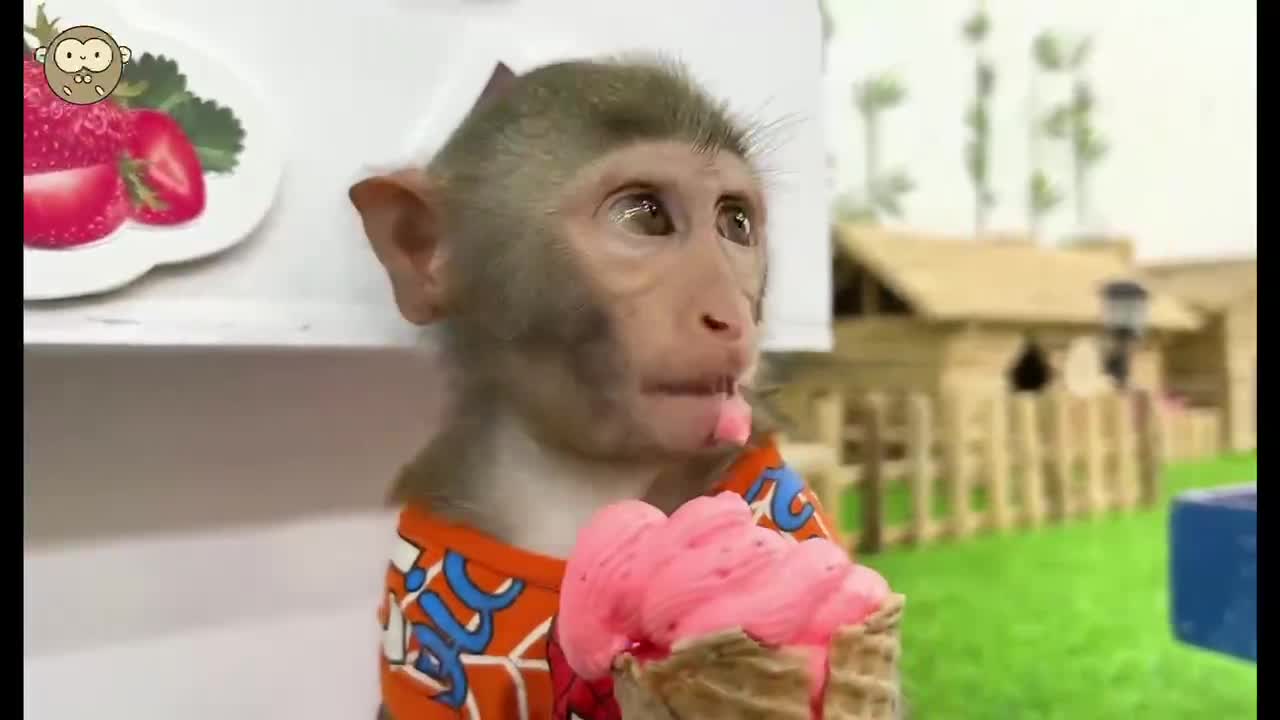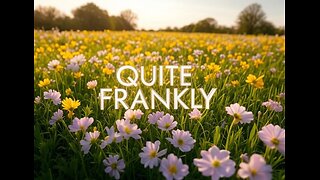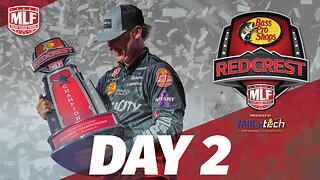Premium Only Content

Little monkey every day funny
Monkey is a common name. Many of the primates we call monkeys. Primates are orders of the class Mammalia. The highest group in the animal kingdom, with developed brains; The orbit is anteriorly oriented with narrow orbital spacing; The toes of the hands and feet are separated, the thumbs are flexible, and most of them can be held in pairs with other toes. Including prosimian and simian suborders. Prosimian has a fox-like face; No cheek pouches or gluteal callose; Forelimbs shorter than hindlimbs, thumb and big toe developed, and other fingers (toes) opposite; The tail can be curled or absent. The simian suborder has a human-like face; Most cheek pouches and gluteal callose; Forelimbs are mostly longer than hindlimbs, big toes some degeneration; The tail is long, some curly, some tailless. According to the regional distribution or nostril structure, simian suborder is divided into broad-nosed monkey group, also known as New World monkeys; Group of snub-nosed monkeys, also known as Old World monkeys. This order consists of about 51 genera and 180 species belonging to 11 families, distributed mainly in warm regions of Asia, Africa and the Americas. Most live in forest areas. The largest primates are gorillas, which can weigh up to 275kg, while the smallest are bonobos, which weigh only 70g.
Most skulls of primates have large cranial cavities, which are spherical in shape, due to shorter jaws and flatter faces. The orbital posterior process develops into bony eye ring, or the orbital socket is completely closed. Most species have short noses, and their sense of smell is secondary to sight, touch and hearing. Some lower species have highly developed olfactory centers in the brain, and act largely by smell. Some lemurs have long snouts. The nasal bones of snub-nosed monkeys and dolphin-tailed langurs degenerate into upturned nostrils. Proboscis monkeys have large, long noses. These special types are formed as muscle or cartilage develops. The thumb and toe of the foot can be held together, making the hand and foot grasping organs. The 5 fingers of the original monkey can only bend and extend at the same time, not individually. The palm surface and □ surface are bare, with finger and toe patterns, and the patterns are different. Having very soft or wide pads, all of them are linear except the black ape. The fingers and toes of most species are flat. Generally, there is little difference in the length of the forelimbs, but the forelimbs of gibbons and orangutans are much longer than the hindlimbs. Apes and humans are tailless, and among species that have tails, the length of their tails varies greatly, from a single protuberance to more than the length of their bodies. Capuchin most species of the tail with grasping function, known as the "fifth hand". Some Old World monkeys, such as baboons, have brightly colored skin on the face, rump, or chest, especially during breeding. The buttocks have lumps of thick, hard skin called gluteal callose.
Most species have one pair of nipples on the chest or under the armpit, and one pair of nipples on the abdomen of the finger monkey. The male penis is pendulous, most of the penis bone, but tarsiers, monkeys, and some species do not have. The brood is wrapped in a pouch. The female body has a bichorned uterus or a single uterus. Body coat, some soft and fine, some coarse hard, or locally very long, or in the coat with heterochromatic links. Some hair on the top of the head is very long, forming a plexiform crown, or very short, flat top, or bald hairless. Some have long hair on both cheeks or under the jaw, like a beard. Some were covered with long hairs on their shoulders, backs and buttocks. Some have very bright hair.
Most primate camps are arboreal or semi-arboreal in some form, with ring-tailed lemurs, baboons, and old monkeys inhabiting ground or rocky areas. Usually in small family groups, but also in large groups. Most can walk upright, but not for long. More in the daytime activities, night activities have pointed monkeys, some indri, night monkeys and so on. The great and bonobos lemurs aemaze for days to weeks during the hot dry season.
Monkeys are mostly omnivorous, eating plant or animal food. The choice of food and feeding methods are different. For example, monkeys are good at picking insects in tree holes or stone gaps. Orangutans are big eaters and spend almost the majority of their active time foraging. Colobus monkeys have a special stomach structure, and most species eat a plant food rich in coarse fiber.
Monkeys breed once or twice a year, with one litter per litter and a few as many as three. The young grow more slowly. Lactation more grab climb in the mother's chest, abdomen or ride on the mother's back, by the mother with activities. Sexually mature females menstruate, and males can mate at any time. Only the lower monkeys, such as lemurs, slow lorises and monkeys, have a certain mating and breeding season.
Many anatomists and paleontologists have included it in the primate group, but its external morphology and ecological habits are so different from those of primates that modern taxonomists have placed it in an order of its own.
Primate fossils are found in the Paleocene to Oligocene strata of North America and Europe and Asia, in the Miocene in Africa and Europe, and in the Pleistocene in South America, Africa and Madagascar. The evolution of primates has a history of 60 million years, early primate fossils found from around the world belong to the original monkey, of which more than 60 genera are now extinct. There are no proto-monkeys in the Americas today, except for a few species that are very similar to the ones that existed 50 million years ago, on the continents of Asia and Africa, Madagascar, and some islands in the Indian Ocean. The history of apes can be traced back to 30 ~ 50 million years ago. About 15 ~ 20 million years ago, the ancestors of apes have spread across Europe, Asia and Africa, but today they only survive in the tropics of Asia and Africa.
In Chinese ancient books, the name of the monkey has Yu, and sure enough, Duzi, marmoset and so on. According to the "White Tiger Tong" record: "Monkey, Hou also, see people set up food volt machine, then by high four look, good Hou also." Wait, wait and see means.
In the northern mountains of the Indonesian island of Kalimantan, the "Monkey Day" is celebrated every year on May 7. In the northern mountains of Thailand, Monkey Sports Day is celebrated on November 1 every year.
-
 LIVE
LIVE
LFA TV
7 hours agoA World Economy Based on Competition | TRUMPET DAILY 4.4.25 7PM
243 watching -
 LIVE
LIVE
2 MIKES LIVE
8 hours ago2 MIKES LIVE #156 Author Frank Lasee will Deep Dive into CLIMATE CHANGE!
91 watching -
 LIVE
LIVE
Quite Frankly
7 hours ago"Firing Squad, Trump Loophole, 'Built Different', More" 4/4/25
638 watching -
 50:21
50:21
Michael Franzese
3 hours agoThe Rise and Fall of Joe Colombo: From Head of the Family to Public Enemy
21.1K3 -
 8:21
8:21
Talk Nerdy Sports - The Ultimate Sports Betting Podcast
2 hours ago4/4/25 - AI Madness & Friday Fire
10.7K -
 6:18:56
6:18:56
Dr Disrespect
7 hours ago🔴LIVE - DR DISRESPECT - WARZONE - VERDANSK SOLOS
141K11 -
 LIVE
LIVE
FusedAegisTV
4 hours agoRumble Smackdown! #001 Street Fighter 6 $500 Online Tournament
147 watching -
 LIVE
LIVE
Major League Fishing
3 days agoLIVE! - MLF Bass Pro Tour: REDCREST - Day 2
200 watching -
 1:08:28
1:08:28
Twins Pod
10 hours agoConservative Latina FIRECRACKER Running For CONGRESS! | Twins Pod - Episode 59 - Valentina Gomez
56.1K13 -
 1:07:56
1:07:56
Jeff Ahern
4 hours ago $1.50 earnedFriday Freak out with Jeff Ahern (1pm Pacific)
30.7K1